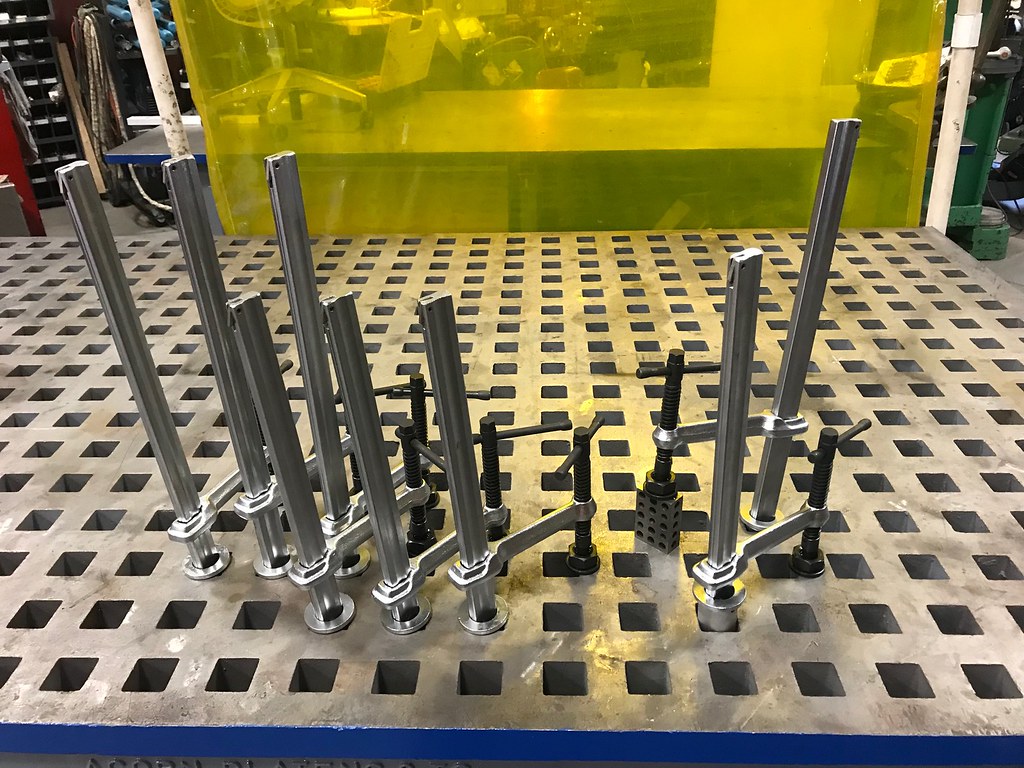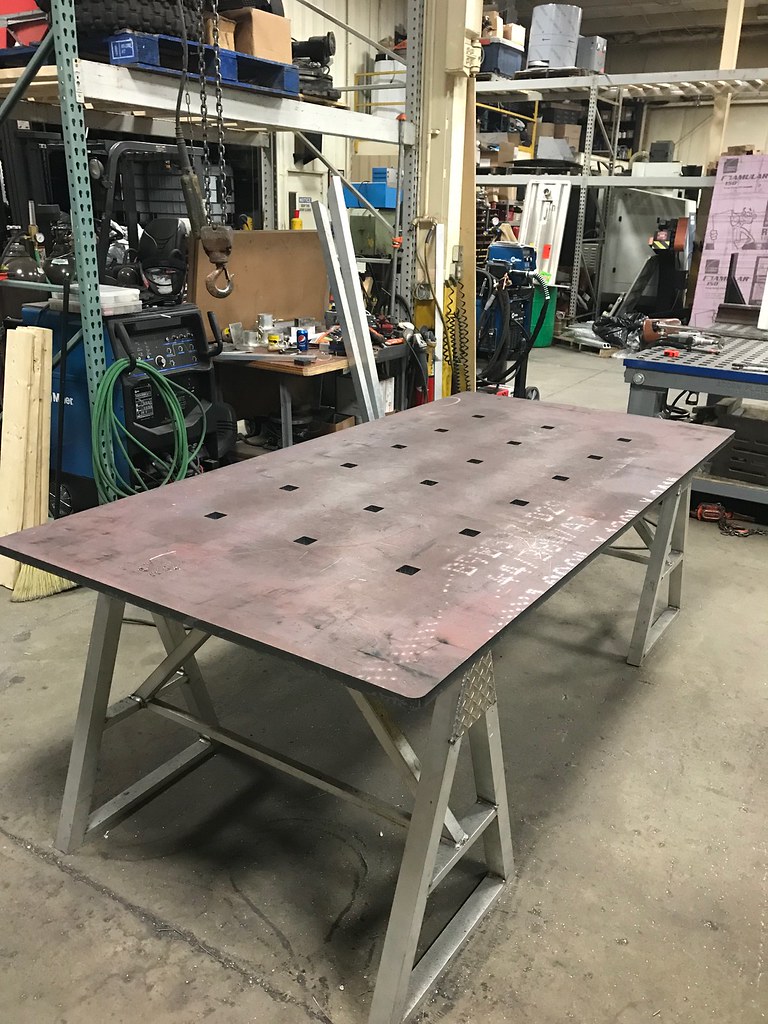If you're just using the holes for sticking clamps into, that's valid, but if it's at all possible to waterjet or laser the holes more accurately, it opens up possibilities for stops and squares and such that are really where fixturing tables shine.
I've got a pair of Siegmund tables, and the accurate hole pattern, coupled with equivalent accuracy on the accessories, makes setups ridiculously fast. All of the stops and squares have both holes and slots - the holes all line up with even inch increments, and the slots allow for fine adjusting fractionals. Because of the consistent hole pattern, I can do entire 3 dimensional setups without even using a tape measure, and a couple quick phone photos is all I need to save the pattern for easy setup again in 6 months if the job repeats.
For that matter, I know you're wanting to roll your own, but once you figure in all the steel, the fab time, sending it out for milling or blanchard grinding the surface, and buying/making some clamps and stops, it's really tough to beat the cost of this setup. I've got two of these, bolted together to make a 4x6' table, and I've got to say, I could not ask for a better designed piece of equipment.
US168125.X7 System 16 3'x4' Imperial (Inch) Welding Table Bundle 2022 – Siegmund Welding Tables USA (An Official Division of Quantum Machinery)
If you do end up rolling your own, pick either 50 mm or 2", depending on whether you work in inch or metric, for your pattern, and you'll be able to purchase stops and squares and quick connect hold down 'bolt's for use - I think Siegmund is the only one offering 2" spacings, but Siegmund, Strong hand and others make stuff to fit 50 mm spacings. 16 mm hole, regardless. I think there's more offerings in the 16 mm market, and you can use a 5/8 clamp in a 16 mm hole, but not the other way around.






